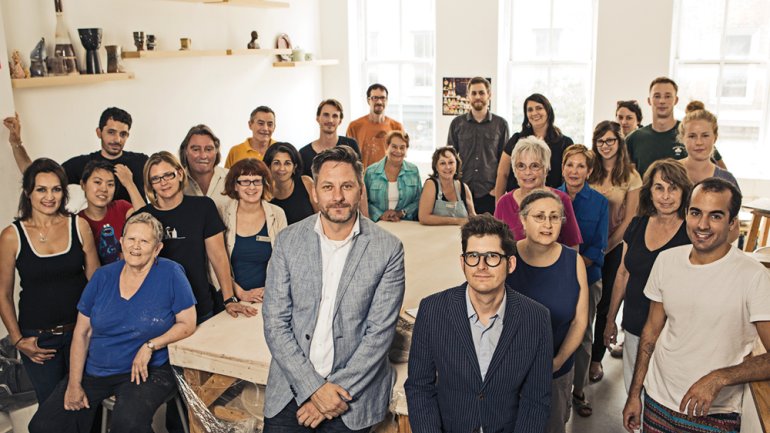Masters: The Clay Studio
Masters: The Clay Studio
Can an insurance broker be the hero in a big success story? He can if he’s Bertram Horowitz, and the building that houses Philadelphia’s Clay Studio has just burned down. It was 1980, the 6-year-old nonprofit was in ashes, and its discouraged artists were asking, “Should we keep going?” In steps Horowitz, who rallies the troops. And the organization rebuilds.
Horowitz, now the namesake for the major donor program, is but one hero of many behind the success of the Clay Studio, which is celebrating 40 years as an ambitious studio, school, gallery, shop, and outreach program.
Another star is Ken Vavrek, one of five founding artists, who had a vision of the Clay Studio as a “halfway house” for ceramics graduates just starting out. Then there is past president Jimmy Clark, who led the expansion of the organization’s international program, which has hosted artists from more than 35 countries.
There’s past president Amy Sarner Williams, widely credited with professionalizing the board and the institution. Don’t forget Jeff Guido, artistic director from 2002 to 2013, who helped launch one of the most generous artist residency programs in the country – five years for 12 artists. And Kathryn Narrow, founder of the Claymobile program, which has served more than 20,000 schoolchildren.
Chris Taylor, president of the Clay Studio since 2011, credits these people and others with the success of the organization. “The founders are still around, and a lot of the people who helped along the way are still here,” he says. “And so this [ACC award] isn’t just for one person or the institution. It really is all of these people.”
Where does he fit into the Clay Studio’s success story? Taylor sees himself guiding the organization through a change of venue, because the lease is up on the current building, a four-story, 21,000-square-foot hive of activity with mosaic-encrusted stairwells. “My role,” he says, “is going to be putting us into a new building.”
Garth Johnson, curator of artistic programs since January, sees himself expanding the connection the organization has with the larger community. And he’s got a head start. In Philadelphia, he says, “it’s easy for me to just say, ‘Hey, I’m the curator at the Clay Studio,’ and everybody seems to have a Clay Studio story.”
With a staff of just 15, the Clay Studio has a broad reach. “Other places will do one piece [of what we do], or they’ll serve one part of the craft community,” says Taylor. “I think the Clay Studio’s uniqueness is in its ability to serve that whole ecosystem.”
The Claymobile has been bringing craft opportunities to Philadelphia kids for 20 years.

